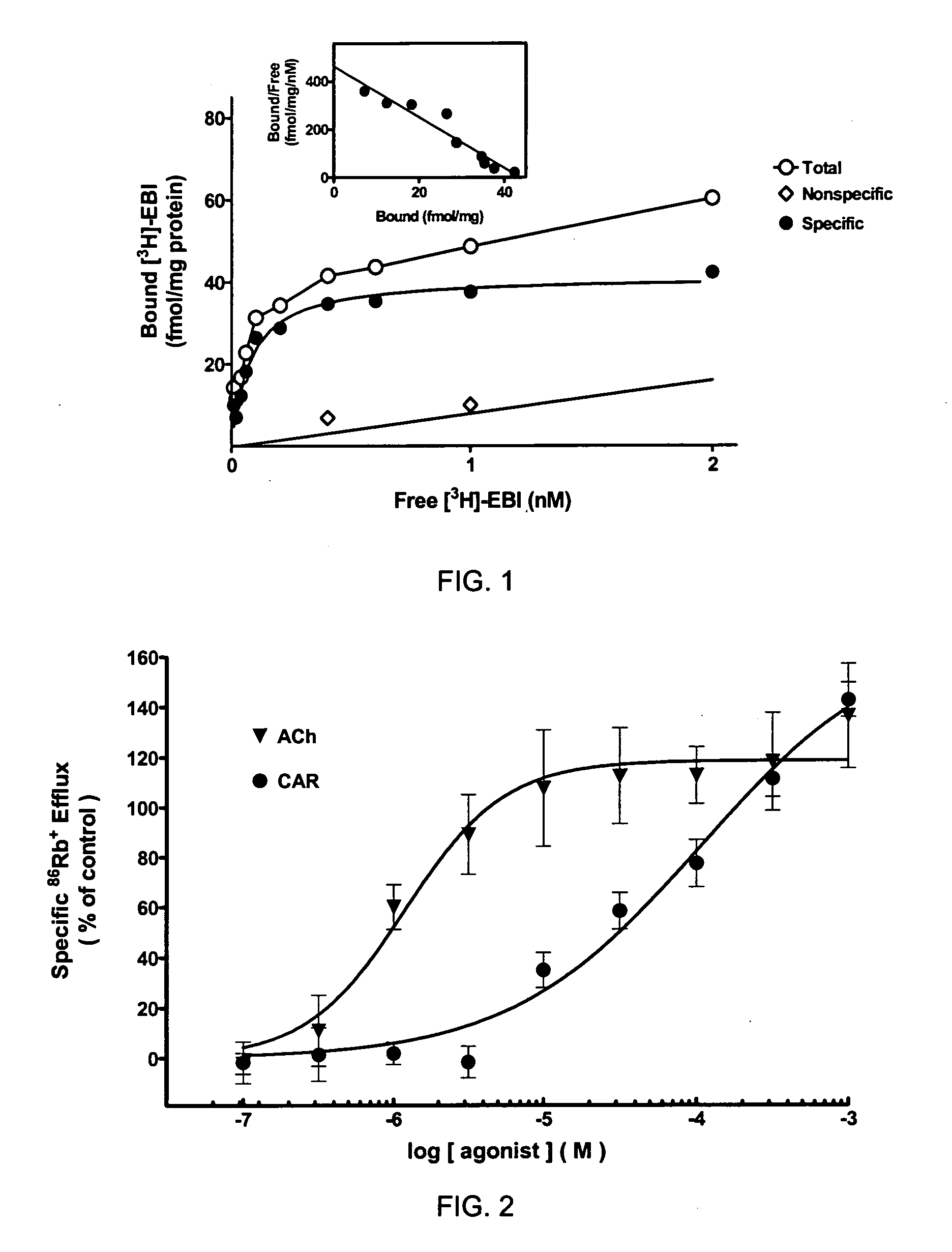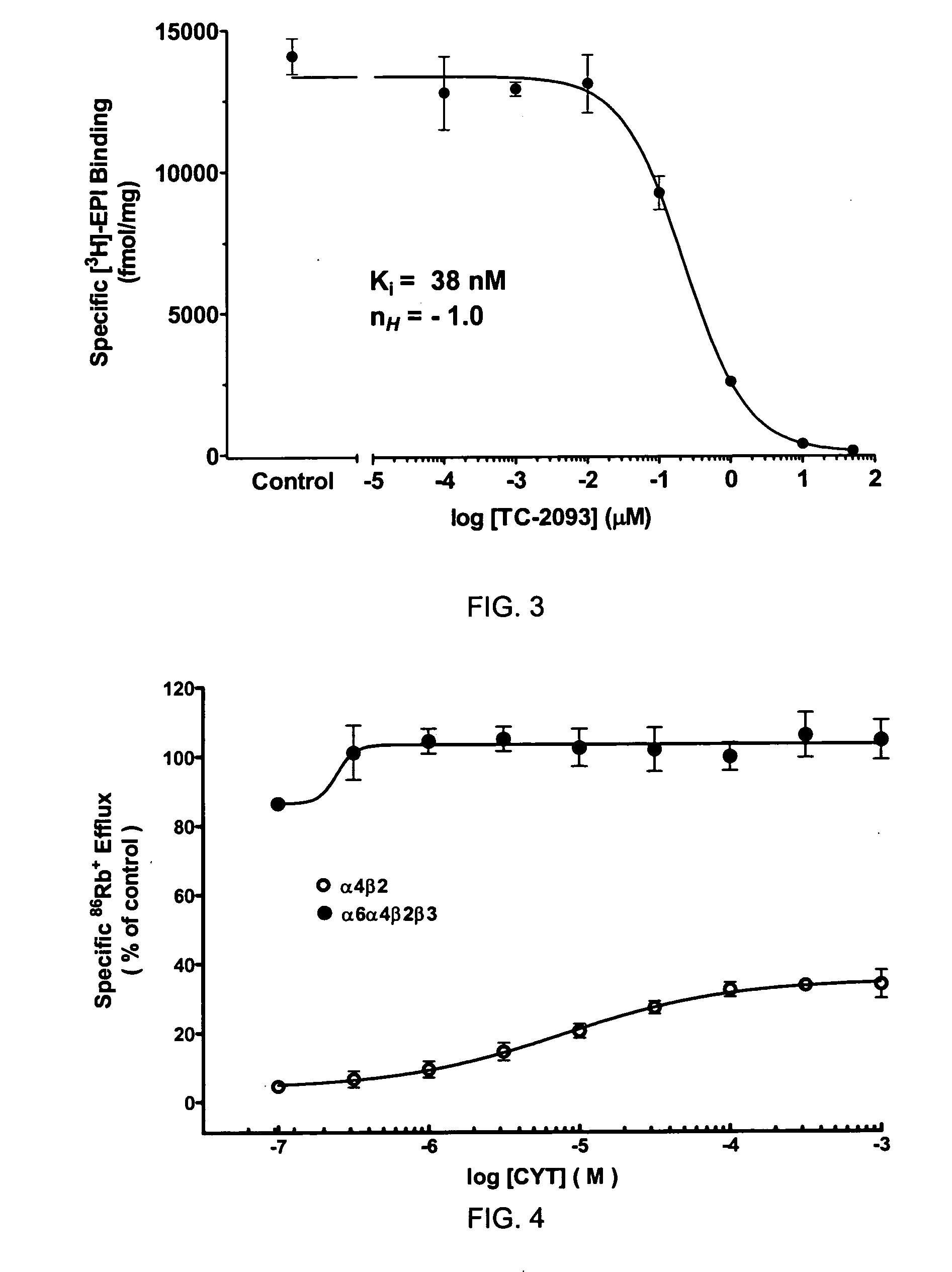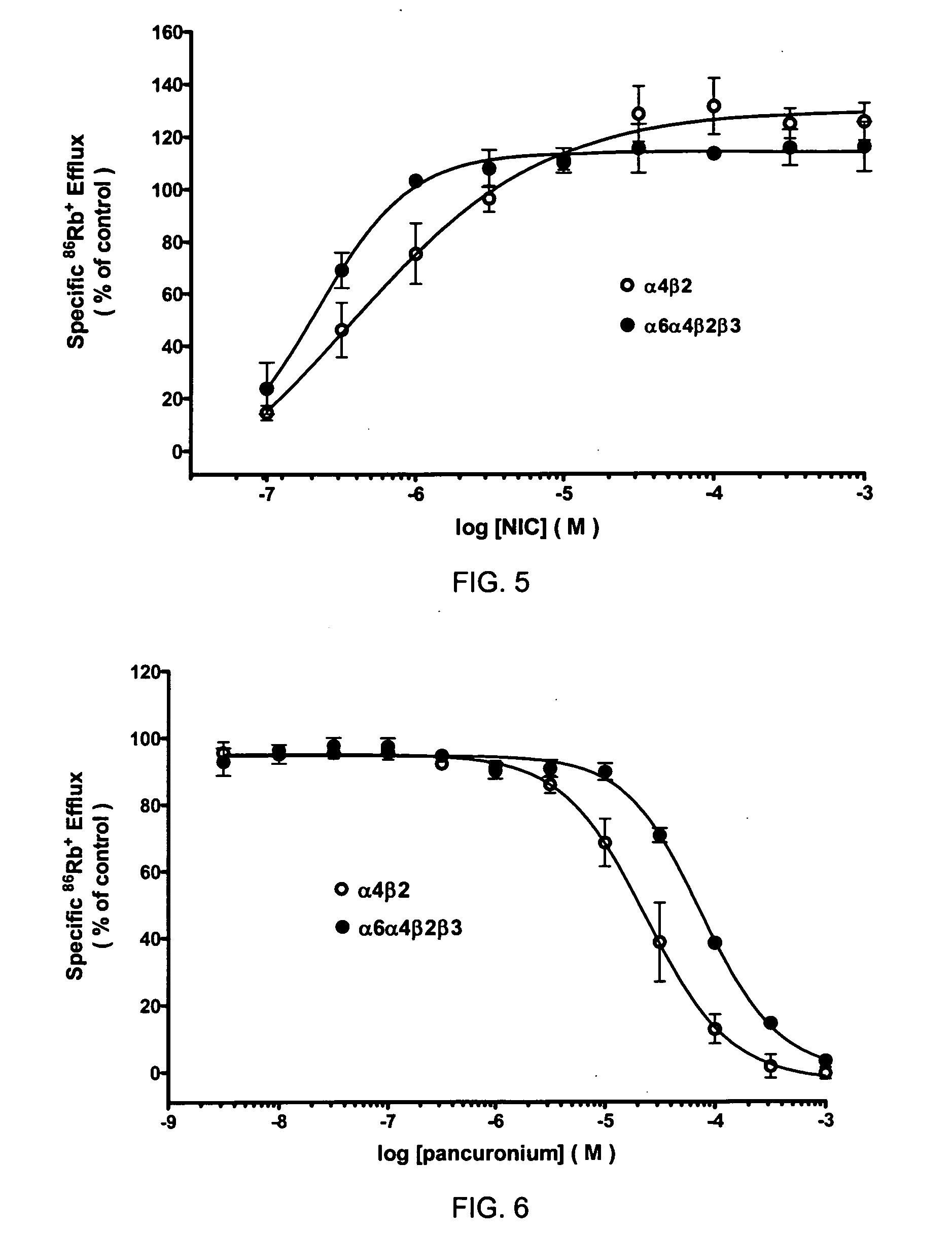Composition and pharmacology of novel alpha6-containing nicotinic acetylcholine receptors
a technology of nicotinic acetylcholine and alpha6 is applied in the field of composition and pharmacology of novel alpha6-containing nicotinic acetylcholine receptors, which can solve the problems of impracticality of using the radiolabeled form of ctxmii to identify 6* nachr, and the inability of the oocyte cell system to allow continuous passage of cells, etc., to achiev
- Summary
- Abstract
- Description
- Claims
- Application Information
AI Technical Summary
Benefits of technology
Problems solved by technology
Method used
Image
Examples
example 1
α6β3β4α5
[0094]Radioligand binding studies were conducted on membranes from SH-EP1 cells expressing α6β3β4α5 nAChR. Specific, saturable [3H]-EPI binding was observed (FIG. 1) with KD=70 μM and Bmax=41 fmol / mg. Data was best fit to a one-site model (R2=0.97; F2,6=0.539: p=0.61). See Table 1 below. Standard nicotinic ligands were used to characterize the binding profile of α6β3β4α5 nAChR. The rank order of binding potency for nicotinic ligands in competition with [3H]-EPI was: TC-2429 (Ki=2 nM)>lobeline=A-85380 (Ki=7-9 nM)>cytisine=methyllycaconitine=nicotine (Ki=150-165 nM)>ABT-418=SIB-1508Y=methylcarbachol=GTS-21=carbachol (Ki=0.9-3.5 μM)>dihydro-β-erythoidine=α-bungarotoxin=mecamylamine (Ki>10 μM). This profile was distinctly different from that of α4β2 and α7 receptors (Table 1).
TABLE 1Binding profile (Ki values) of nAChR ligands.α6β3β4α5α4β2α7[3H]-EPI Binding[3H]-NIC Binding[3H]-MLA BindingSH-EP1 cellsRat BrainRat brainCompoundKi (nM)EPI0.07TC-24292150(-)-LOB715>10000A-85380931200...
example 2
α6α4β2β3
[0097]High levels of [3H]-EPI binding to α6α4β2β3 nAChRs in SH-EP1 cells was observed and can be displaced with TC-8 (Ki=38 nM, FIG. 3). In functional studies, CYT had higher efficacy and agonist potency at α6α4β2β3 nAChR than at α4β2-nAChR (FIG. 4). NIC also exhibited higher functional agonist potency at α6α4β2β3-nAChR than at α4β2-nAChR (FIG. 5). These findings indicate that inclusion of α6 subunits in assemblies that also contain α4 subunits alters functional pharmacological properties. This interpretation is supported by lower sensitivity of α6α4β2β3-nAChR to functional blockade by pancuronium than for α4β2-nAChR (FIG. 6). Tandem immunoprecipitation-western analyses indicates that α6 and α4 subunits are indeed co-assembled in expressed α6α4β2β3-nAChR.
PUM
| Property | Measurement | Unit |
|---|---|---|
| pH | aaaaa | aaaaa |
| temperature | aaaaa | aaaaa |
| volume | aaaaa | aaaaa |
Abstract
Description
Claims
Application Information
 Login to View More
Login to View More - R&D
- Intellectual Property
- Life Sciences
- Materials
- Tech Scout
- Unparalleled Data Quality
- Higher Quality Content
- 60% Fewer Hallucinations
Browse by: Latest US Patents, China's latest patents, Technical Efficacy Thesaurus, Application Domain, Technology Topic, Popular Technical Reports.
© 2025 PatSnap. All rights reserved.Legal|Privacy policy|Modern Slavery Act Transparency Statement|Sitemap|About US| Contact US: help@patsnap.com



